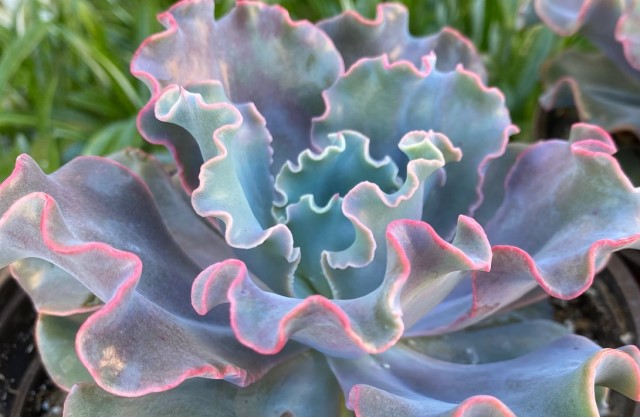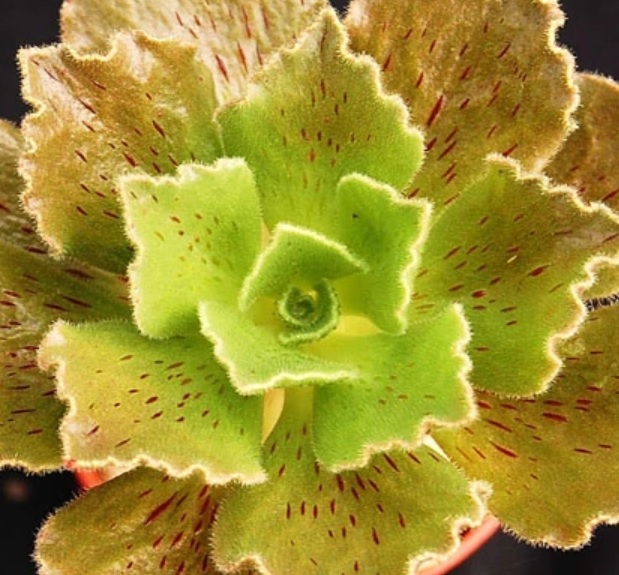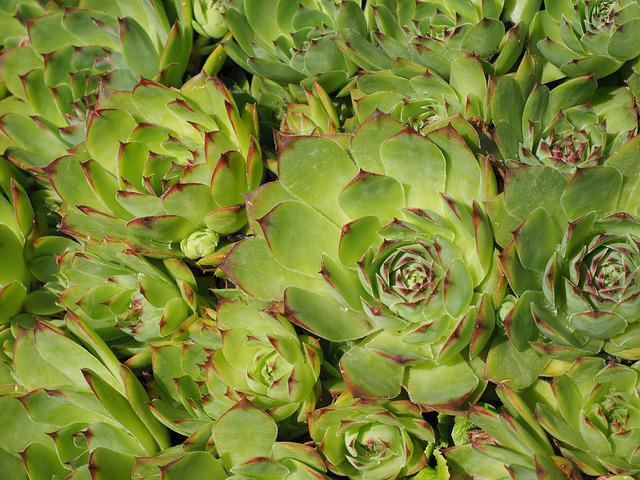Cabbage is a healthy vegetable most kids do not like. But you should eat it often, especially in winter, in fermented form. Having said that, a vegetable garden isn’t the only place where you can find cabbage, or cabbage-like plants. In the versatile world of succulents, with endless shape and colors, one can find a plant resembling almost anything, including cabbage. In this post we will look at three such succulents, all of which you can grow both indoors and outdoors.
Before we look into details, I want to point out something for rabbit lovers. Rabbits do not look at plants in a way we do. They rely on different senses than humans–mostly on smell and hearing, and they can recognize a real cabbage from a succulent plant resembling one. Hence you do not have to worry that your favorite pet will devour your beautiful succulent for breakfast! That’s for the introduction, let’s move to the list.
No .1 succulent resembling cabbage: Echeveria Ruffles, or “The ornamental cabbage”

This beauty comes in many color variations, and in some of them it resembles cabbage more than any other succulent does. You can easily buy it in the US, since many producers grow it in green houses.
It isn’t particularly demanding (just like vast majority of succulents), though it enjoys brightly lit conditions and dry air. It grows fairly quickly, just like cabbage does, which may add to confusion of some of your visitors, who may inquire why you grow cabbage on your bedroom window :).
No. 2 succulent that looks like cabbage: Aeonium Smithii

One of the many beautiful succulents native to Canary Islands (this one lives on Tenerife, on the volcano, at least 1,200 meters above sea level), this one isn’t as easy to get as the “Ornamental Cabbage” succulent. However, you can get it in some shops in both Europe and US, but get ready to pay a higher price. As you can see on the picture, it resembles cabbage from the distance. Getting closer though, you will notice the tiny hair on the leaves as well as special coloring, which easily distinguishes it from the cabbage in your garden.
You should care for it like you do for other members of aeonium family: dry conditions, taking it inside when temperatures drop below 10 degrees, and water sparingly. It doesn’t rain often on Canary islands, so you can imagine what this succulent likes. Having said that, climate and soil on the Canary Islands is really specific, and it may not surprise you that many people struggle to grow this succulent in their house or garden.
No. 3 succulent that looks like a cabbage: Sempervivum tectorum, the common houseleek

The last choice on my list may surprise you, but I have to go with one of the most commonplace succulents of all. Native to Southern Europe and cultivated all around the world, this succulent is inexpensive and easy to get. The rosette-forming evergreen succulent is easy to care for and undemanding. If you plant it in a right spot outside, that means some sunny spot in a dry climate, it will just grow and grow and you can enjoy a “garden of small succulent cabbages” in your courtyard.
In the past people believed the plant protected houses against thunderstorms, which is the main reason why they grew it on house roofs, and why it is called House Leek. Now people grow it mostly for pleasure, through in some rural parts of Italy and Spain you will still find in on many rooftops. As I’ve already said, this succulent is much easier to get than the previous two species (though they resemble cabbage better), and it can be the one you were looking for. Just visit your favorite online store, or a neighbor who grows it and will happily give you a few small rosettes.
Final thoughts
World of succulents will never cease to fascinate me with countless colors and shapes. With over 10,000 succulent species growing in the world, you can find a plant resembling anything you could imagine, and also some things you couldn’t. I hope you enjoy this variety as much as I do, and wish you good luck with your plants!
May also interest you: 3 succulents that look like trees.
